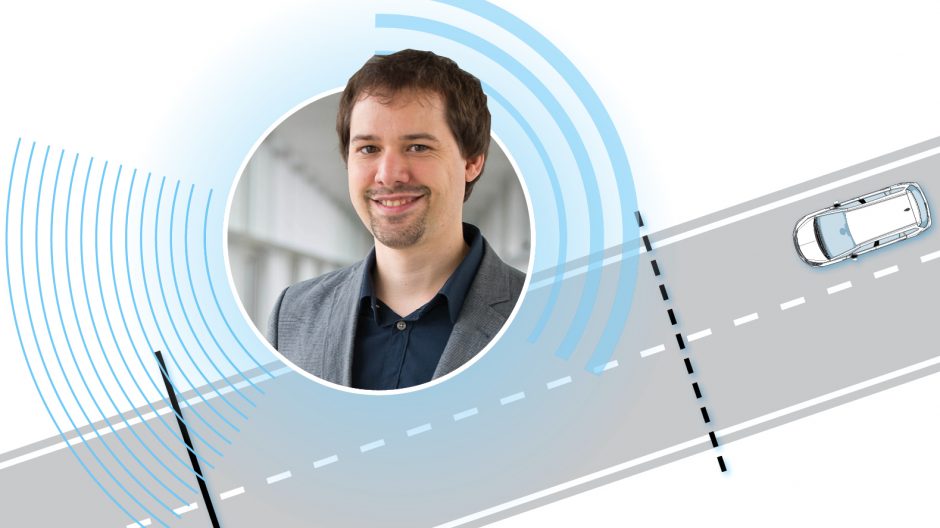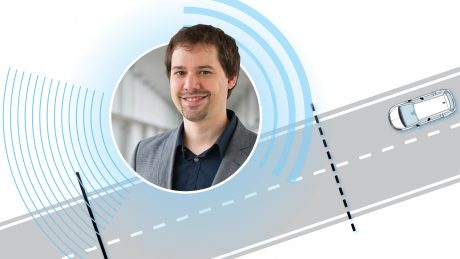![]()
PhD Candidates
at Opel
They question basic principles, increase the innovative power of a company, and shape the industry’s future. We will introduce PhD candidates researching their topics at Opel (and their contents) in an occasional feature series. Currently there are 23 students working on their dissertations at Opel.
What the Vehicle Knows
A car that moves and steers over long distances all by itself. A fascinating idea, but one that arouses skepticism, mainly due to the question: How can the automated steering system know what is approaching the vehicle along the way? Of course, highly accurate positioning is possible thanks to a fusion of GPS and camera data. But what about up-to-date and highly precise information about routes, or safety-related information, such as accidents, traffic volume, or objects on the road? This information is provided (for the first time now) by an external server that is fed with data from other vehicles. The other cars on the road cooperate with each other and send the server information captured by their own sensors, such as lane markings, road signs, or objects.
Several cars race down the highway at 130 kilometers an hour. None of the drivers have their hands on the steering wheel. One is using his hands to type out an e-mail message on his tablet. Another is using them to gesticulate wildly during a conversation with a fellow passenger. A third keys a destination into the navigation system, then takes out a sandwich.
When their vehicles prompt them to do so, the drivers take their respective steering wheels in hand for a specified period of time. They steer the cars manually until the system sends them the following message: You can let go and relax again. “This is the principle behind ‘highly automated driving,’ the next step on the road to a self-driving car,” says Opel employee Bernhard Wandtner as he takes notes at a driving simulator in Rüsselsheim. “The car handles the gas, brakes, and steering wheel on the highway.” The human, according to Wandtner, only has to grab the steering wheel “if the system itself recognizes that the limits of automation have been reached. For example, at a construction site or exit ramps.”
AN INTERFACE BETWEEN MAN AND MACHINE
It is therefore essential that the driver have a warning period in which to switch mentally from ‘non-driving activities’ to the concentrated state required to control the vehicle. Numerous psychological mechanisms come into play in the moments before a driver assumes control. These moments are a crucial factor in designing the man–machine interface, and that is precisely the area being researched by Bernhard Wandtner.
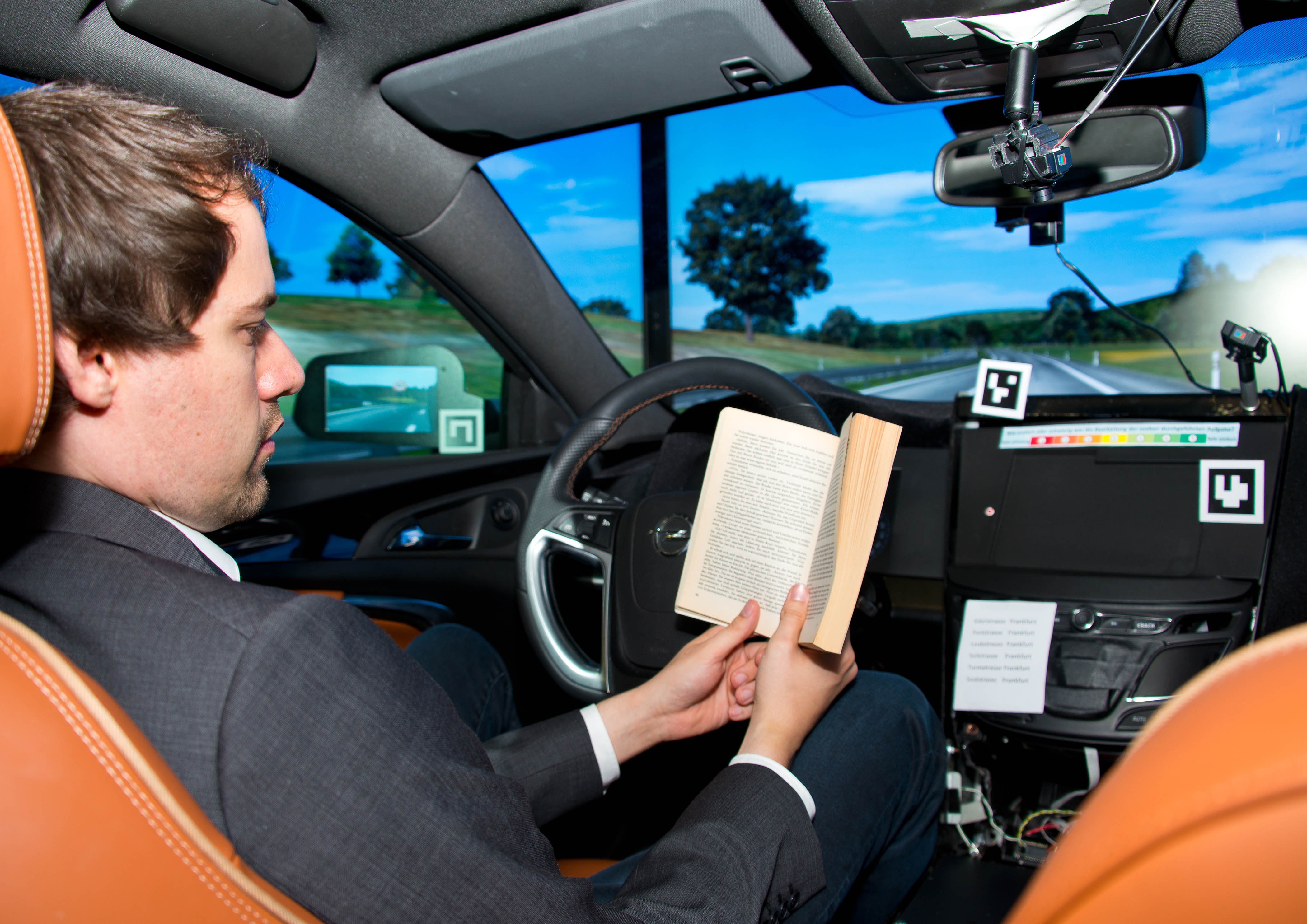
Hands on a book: Bernhard Wandtner sits at the steering wheel and reads the science-fiction novel ‘I, Robot.’ The driver only needs to take over when the highly automated driving system reaches its limits.

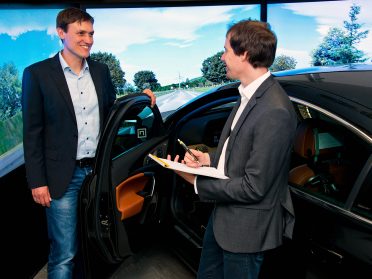
Main point of contact: Dr. Gerald Schmidt (left), Project Manager of Driver Assistance Systems, supervises the project on Opel’s behalf.
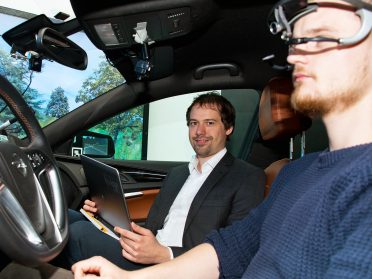
In the simulator: Behavior and responsiveness are recorded in the vehicle by means of cameras and 3D image sensors.

RÉSUMÉ
Bernhard Wandtner, born in 1986. As a teenager, he was interested in cars and literature, preferring the science-fiction novels of biochemist Issac Asimov (‘I, Robot’).
He studied psychology and bioinformatics in Frankfurt. His dissertation, which will be submitted to Professor Wilfried Kunde at Würzburg University’s Institute of Psychology, is being supervised internally at Opel by Dr. Gerald Schmidt, a project manager in the Driver Assistance Systems area. Wandtner’s motto is: “There are already fast cars. I want to make driving safe and comfortable.”
The 30-year-old certified psychologist and bioinformatics specialist (B.Sc.) has contributed to preliminary development at Opel, or more precisely, to the interdisciplinary team in the Advanced Technology Active Safety & Controls department since 2015. As a result of a project sponsored by the Federal Ministry for Economic Affairs and Energy, the team created a prototype capable of highly automated driving on highways at speeds of up to 130 km/h. “This represents a major step forward from the present, where assistance systems make driving tasks easier, to completely automated driving, in which the car moves automatically without any influence from the driver.”
The title of Wandtner’s dissertation is ‘Self-regulation when Dealing with Non-driving Activities in the Context of Highly Automated Driving.’ In the PhD candidate’s own words: “Once we strip away the professional jargon, my question boils down to this: How can we get drivers to take a break from talking on the phone, texting, or daydreaming, correctly assess the situation on the road, and take the wheel again? And how much time does this mental transition require?”
STUDIES WITH TEST SUBJECTS PROVIDE ANSWERS
Studies conducted with test subjects in a driving simulator are Wandtner’s main way of finding answers. His test subjects represent a cross-section of car drivers in terms of age, sex, and experience at the wheel. Behavior and responsiveness are recorded in the vehicle by means of cameras and 3D image sensors. The study tests how drivers take back the wheel after ‘non-driving activities,’ such as eating, drinking, or smartphone use, as well as conversations with other vehicle occupants.
“Initial results show that a driver needs from seven to ten seconds to take charge of the situation and begin steering manually. But we’re aiming at much longer preliminary times to ensure a comfortable transition,” says the PhD candidate. Whether the right here-we-go-again signal is a specific sound or a spoken cue, and whether the message should be accompanied with optical signals inside the car – these are the questions that Bernhard Wandtner is currently exploring in his efforts to develop an adaptive display and control concept that enables the driver to take back the wheel safely.
Advantages of Automated Driving
Why it pays to make things easy for the driver
Step by step. The road from manual to fully automated driving consists of five levels. Assisted and partially assisted driving requires the driver to monitor driving constantly, to operate the gas and brake pedals, and/or to take the steering wheel. Bernhard Wandtner is dealing with highly automated driving, the first stage in which the driver no longer has to monitor the vehicle constantly. However, the driver has to be able to take over the vehicle within a reasonable amount of time. If the passenger in the car no longer has to monitor the vehicle at all, then we are dealing with what is known as fully automated driving

Increased road safety
Statistics show that human error accounts for 90 percent of accidents.
Increased efficiency
The flow of traffic improves and emissions decrease.
Increased comfort and productivity
Travelers can relax or engage in non-driving activities.
Last update October 2016
